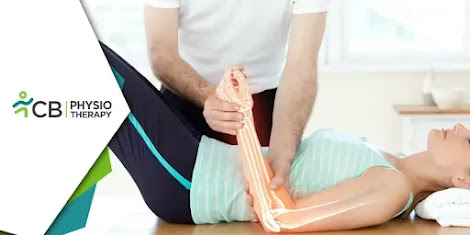Muscle weakness and joint pain often seem like separate issues, but they’re more intertwined than we might think. Our bodies are intricate systems where one part’s weakness can significantly impact another’s health. In this blog, we’ll delve into the relationship between muscle weakness and joint pain, and explore how physiotherapy plays a crucial role in addressing and alleviating these interconnected problems.
Understanding the Link:
To comprehend how muscle weakness contributes to joint pain, it’s essential to grasp the mechanics of our musculoskeletal system. Muscles act as dynamic stabilizers for joints, providing support and absorbing shock during movement. When muscles surrounding a joint weaken, the joint becomes more susceptible to stress and strain.
Altered Joint Mechanics: Weak muscles fail to adequately support joints, leading to altered biomechanics. This places abnormal stress on the joint structures, such as cartilage and ligaments, resulting in pain and dysfunction.
Compensatory Movements: The body is remarkably adaptive, often compensating for weakness by altering movement patterns. While this compensatory mechanism may temporarily alleviate stress on the weakened muscles, it places undue strain on other structures, exacerbating joint pain over time.
Muscle Imbalance: Muscle weakness can create imbalances around joints, where certain muscles become overactive while others remain underused. This imbalance further destabilizes the joint, contributing to pain and dysfunction.
Role of Physiotherapy:
Physiotherapy, with its holistic approach to rehabilitation, emerges as a beacon of hope for individuals grappling with muscle weakness and joint pain. Here’s how physiotherapy interventions effectively address these issues:
Strengthening Exercises: A tailored exercise regimen targeting specific muscle groups can help restore strength and stability around affected joints. By gradually increasing resistance and intensity, physiotherapists enable muscles to regain their supportive function, alleviating joint pain in the process.
Corrective Techniques: Physiotherapists employ various corrective techniques to improve biomechanics and restore optimal movement patterns. These may include manual therapy, joint mobilization, and neuromuscular re-education to address muscle imbalances and dysfunctional movement patterns contributing to joint pain.
Pain Management Strategies: Physiotherapy encompasses a range of pain management modalities, including heat therapy, cold therapy, and electrotherapy, like laser therapy, shockwave therapy, TENS, etc to alleviate discomfort and facilitate healing. These modalities help reduce inflammation, soothe sore muscles, and improve joint mobility, promoting overall function and well-being.
Patient Education: Empowering patients with knowledge about their condition and self-care strategies is a cornerstone of physiotherapy. By educating individuals on proper posture, ergonomic principle, physiotherapists equip them with the tools to manage their symptoms and prevent future recurrences of muscle weakness and joint pain.
The intricate interplay between muscle weakness and joint pain underscores the importance of a comprehensive approach to rehabilitation. Physiotherapy stands at the forefront of this endeavor, offering personalized interventions aimed at addressing the root causes of dysfunction and restoring optimal musculoskeletal health. By harnessing the therapeutic power of exercise, manual therapy, and patient education, physiotherapists empower individuals to overcome muscle weakness, alleviate joint pain, and reclaim their quality of life. If you’re grappling with these issues, consider consulting a physiotherapist to embark on your journey towards pain-free movement and enhanced well-being.




